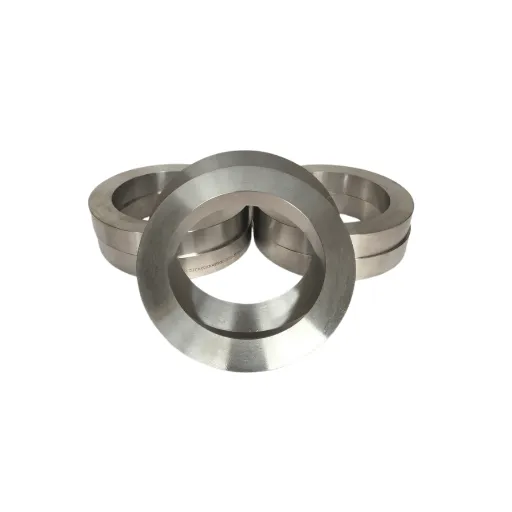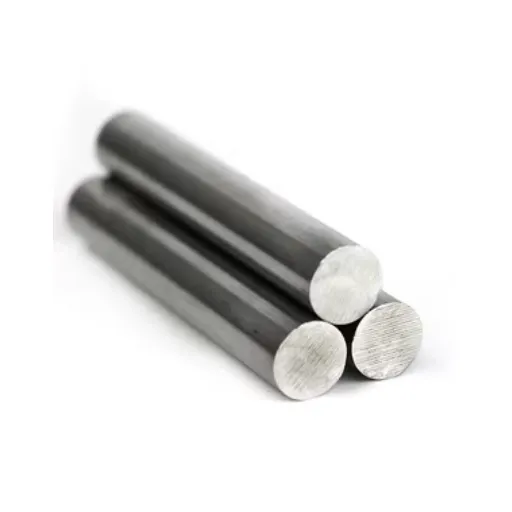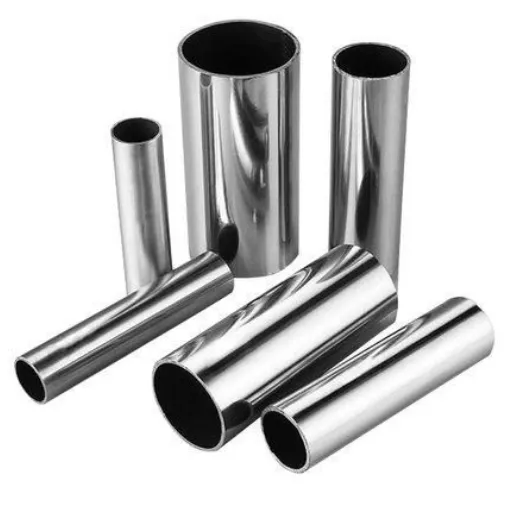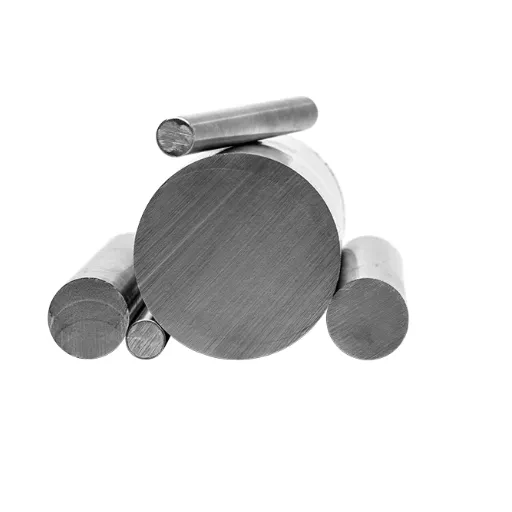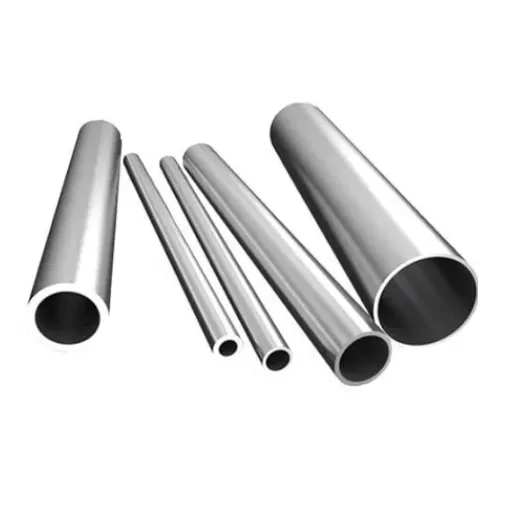Magnetism is one compelling phenomenon that governs the behavior of materials in the presence of magnetic fields. While typical metals such as iron and nickel are regarded as having strong magnetic properties, the question often arises about less usual materials like titanium. Would titanium, the metal known for its highest strength-to-weight ratio and corrosion resistance, even stick to a magnet?
Overview of Titanium
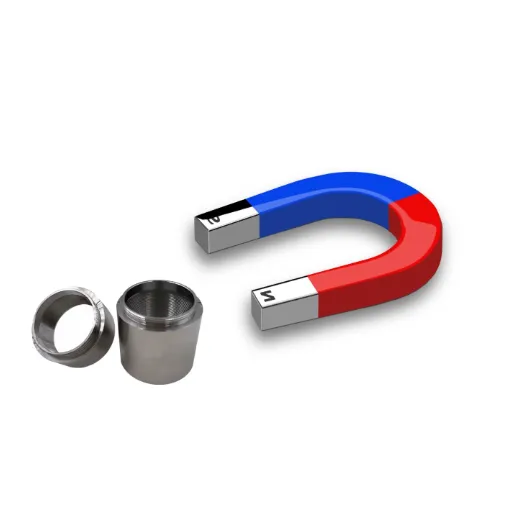
What is Titanium?
Titanium acts as an element with the symbol Ti and atomic number 22, a transition metal. Respecting its stunning strength-to-weight ratio, this metal is lightweight yet very strong, making it highly valued in demanding industries. Another important aspect is its corrosion tolerance capabilities, even in extreme conditions like seawater and acidic environments.
Paramagnetism accounts for titanium being non-magnetic structurally. That is, it offers a very weak attractive force to magnetic fields and does not become magnetized when the external field is removed. With the electronic configuration and no unpaired electrons present in titanium, this property distinguishes it from other metals that behave magnetically.
Titanium is relatively nontoxic and biocompatible. Hence, its most fantastic application lies in the medical field for implants and prosthetics. It’s good bonding with bone and tissue, coupled with resistance to body fluids, makes it indispensable in modern medical applications.
Types of Titanium
Titanium can be divided into four basic grades, depending on its composition and intended use:
- Commercially Pure Titanium (Grades 1-4): Contains at least 99% titanium by weight. These grades differ mainly in oxygen content, which influences their strength and ductility.
- Titanium Alloys: Made by alloying titanium with elements such as aluminum, vanadium, or molybdenum. The most common is Ti-6Al-4V (6% aluminum, 4% vanadium).
- Specialized Grades: Refined for niche applications, such as Grade 7 with palladium for enhanced corrosion resistance, and Grade 23 for critical medical implants.
Properties of Titanium
Besides extraordinary tensile strength and corrosion resistance, titanium is considered light among metals. Key properties include:
- Exceptional strength-to-weight ratio
- Superior corrosion resistance in extreme environments
- Biocompatibility for medical applications
- Low thermal expansion and dimensional stability
- Non-toxic to the human body
Magnetic Properties of Titanium
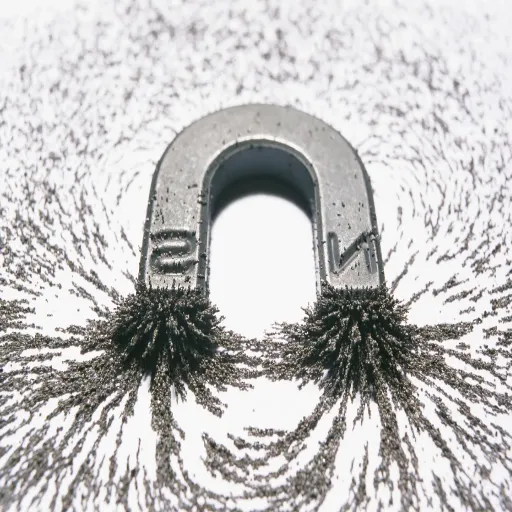
Is Titanium Magnetic or Non-Magnetic?
Answer: Titanium is classified as a non-magnetic metal. It is paramagnetic, meaning it shows weak magnetism under the influence of an external magnetic field but fails to retain any magnetism upon withdrawal of the magnetizing field.
Research shows titanium’s magnetic susceptibility to be negligible, with values commonly registering at +20 × 10⁻⁶ emu/g (electromagnetic units per gram) at room temperature. This makes titanium highly desirable in applications where materials should not interfere with magnetic fields, such as:
- MRI machines
- Aerospace applications
- Sensitive electronics
- Medical implants
Understanding Titanium’s Magnetic Behavior
Titanium exhibits weak paramagnetic attraction in magnetic fields due to its electron configuration. The outermost shells lack unpaired electrons, resulting in minimal magnetic susceptibility. When combined in alloys, titanium maintains its paramagnetic characteristics unless components with strong ferromagnetic or diamagnetic properties are introduced.
Paramagnetic vs. Diamagnetic Properties
| Property | Paramagnetic | Diamagnetic |
|---|---|---|
| Electrons | Unpaired | Paired |
| Susceptibility | Positive | Negative |
| Attraction | Weakly attracted | Weakly repelled |
| Field Retention | No | No |
| Examples | O₂, FeO | H₂O, NaCl |
Comparison with Other Metals

How Titanium Compares to Steel
Key differences between titanium and steel include:
- Density: Titanium (4.5 g/cm³) vs Steel (7.8-8.0 g/cm³)
- Strength-to-weight ratio: Titanium is superior
- Corrosion resistance: Titanium is excellent; steel requires coatings
- Cost: Titanium is more expensive due to complex processing
- Machinability: Steel is generally easier to work with
Aluminum vs. Titanium: A Magnetic Perspective
| Property | Aluminum | Titanium |
|---|---|---|
| Magnetism | Paramagnetic | Diamagnetic |
| Susceptibility | Positive | Negative |
| Attraction | Weakly attracted | Weakly repelled |
| Field Retention | No | No |
| Permeability | ~1.000022 | ~1.00001 |
| Applications | Aerospace, Packaging | Medical, Aerospace |
Factors Influencing Titanium’s Magnetic Behavior
Influence of Alloy Composition
The magnetic properties of titanium are influenced by alloy composition. Key alloying elements include:
- Aluminum (Al): Enhances strength without affecting density; minimal impact on magnetic properties
- Vanadium (V): Improves corrosion resistance and stabilizes the beta phase; slight magnetic behavior changes
- Iron (Fe): Even small quantities can affect magnetic behavior; kept under tight control in aerospace applications
- Molybdenum (Mo): Strengthens and improves creep resistance; minimal magnetic property changes
- Tin (Sn): Improves workability and oxidation resistance; negligible magnetic influence
Impact of Temperature on Magnetism
Temperature significantly affects magnetic properties through several mechanisms:
- Curie Temperature: The point at which ferromagnetic materials become paramagnetic
- Thermal Expansion Effects: Changes in magnetic domain alignment and size
- Coercivity Changes: Decreased resistance to demagnetizing fields at higher temperatures
- Hysteresis Loss Variations: Increased energy losses during magnetization cycles
- Thermal Assisted Demagnetization: Accelerated irreversible demagnetization at high temperatures
Practical Applications of Titanium’s Magnetic Properties

Aerospace Industry Considerations
In aerospace applications, titanium’s paramagnetic properties ensure that components don’t interfere with sensitive onboard equipment such as:
- Aircraft communication systems
- Radar implementations
- Navigation equipment
- Engine components and airframe structures
Medical Devices and MRI Safety
Titanium’s non-magnetic nature makes it ideal for medical applications, particularly in MRI environments. Benefits include:
- No interference with MRI magnetic fields
- Excellent biocompatibility for implants
- Safe for orthopedic implants, dental fixtures, and cardiovascular devices
- Corrosion resistance in biological environments
Consumer Products and Everyday Use
Titanium’s properties make it valuable in consumer applications:
- Sports Equipment: High-performance gear with minimal weight
- Electronics: Smartphone and laptop casings for durability
- Jewelry: Hypoallergenic properties for sensitive skin
- Eyeglass Frames: Lightweight and flexible for comfort
Frequently Asked Questions (FAQ)
References
- University of Maryland: Is Titanium Magnetic? – An in-depth outline of titanium’s non-magnetic properties
- Rice University: Nonmagnetic duo form unique magnet – Discusses titanium’s non-magnetic properties and behavior with other elements

